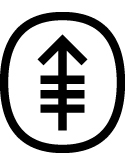| Abstract: |
This paper provides a survey of current design strategies for Phase I., and II trials of chemotherapeutic agents and biological response modifiers pertinent to cancer therapy. Definitions of Phase I., and II trials are first given. A typical Phase I., trial is described using an example of trial testing a new colony stimulating factor (CSF), which had the goal of defining toxicity with a limited number of dose levels. Two designs of Phase I.I., trials are then described, first, the traditional design of Gehan, and then the multiple testing procedure of Elfring and Schultz and Fleming. The advantages and disadvantages of these designs are discussed. Some extensions are then suggested, such as a design for a Phase I–II trial and a randomized Phase I.I., trial that may be extended into a Phase I.I.I., trial if the treatments have sufficient efficacy. Early statistical input into Phase I., and II trials of cancer treatment is needed to assure proper clinical trial design. © 1990, Drug Information Association. All rights reserved. |



